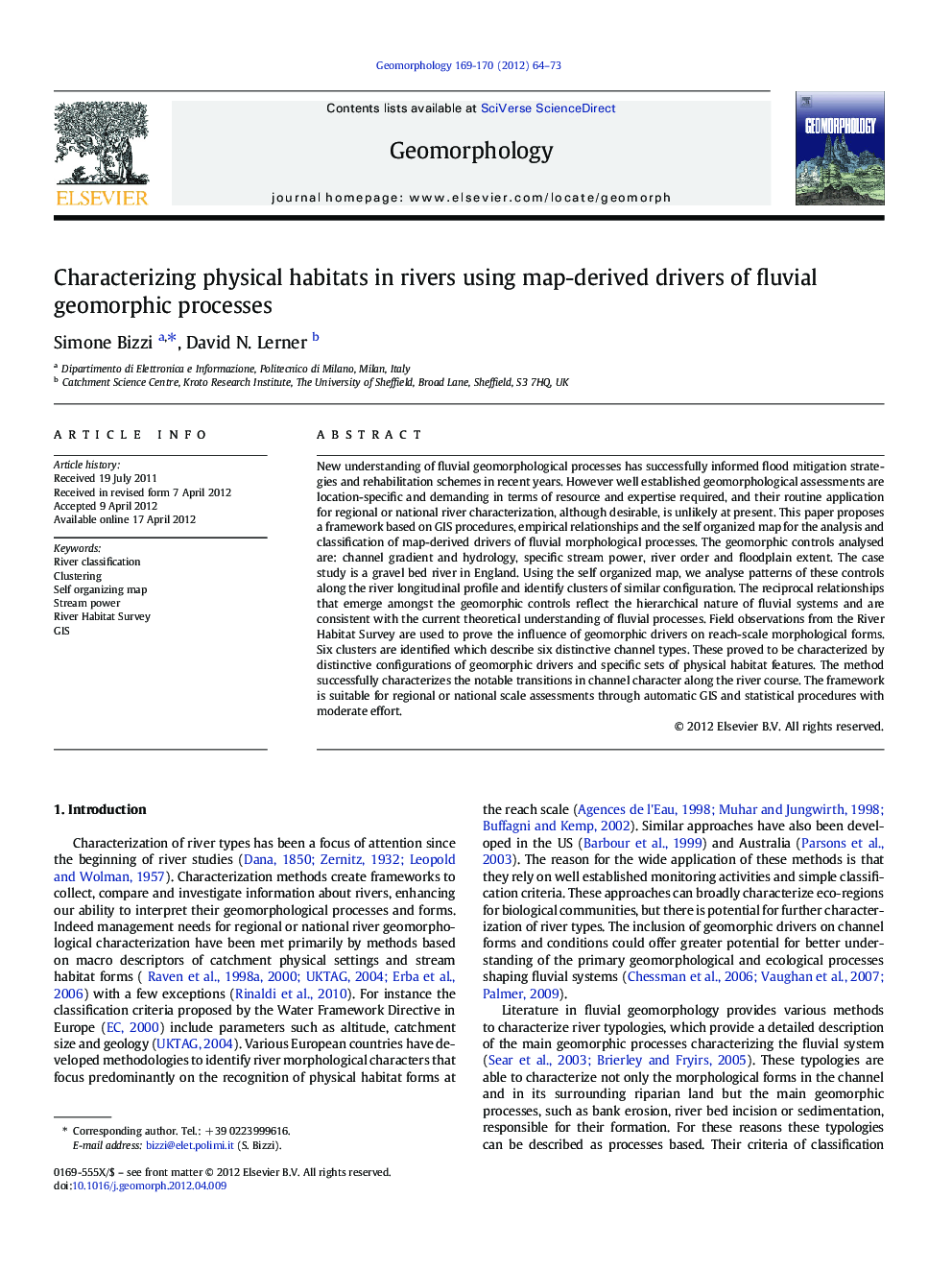| Article ID | Journal | Published Year | Pages | File Type |
|---|---|---|---|---|
| 4685100 | Geomorphology | 2012 | 10 Pages |
New understanding of fluvial geomorphological processes has successfully informed flood mitigation strategies and rehabilitation schemes in recent years. However well established geomorphological assessments are location-specific and demanding in terms of resource and expertise required, and their routine application for regional or national river characterization, although desirable, is unlikely at present. This paper proposes a framework based on GIS procedures, empirical relationships and the self organized map for the analysis and classification of map-derived drivers of fluvial morphological processes. The geomorphic controls analysed are: channel gradient and hydrology, specific stream power, river order and floodplain extent. The case study is a gravel bed river in England. Using the self organized map, we analyse patterns of these controls along the river longitudinal profile and identify clusters of similar configuration. The reciprocal relationships that emerge amongst the geomorphic controls reflect the hierarchical nature of fluvial systems and are consistent with the current theoretical understanding of fluvial processes. Field observations from the River Habitat Survey are used to prove the influence of geomorphic drivers on reach-scale morphological forms. Six clusters are identified which describe six distinctive channel types. These proved to be characterized by distinctive configurations of geomorphic drivers and specific sets of physical habitat features. The method successfully characterizes the notable transitions in channel character along the river course. The framework is suitable for regional or national scale assessments through automatic GIS and statistical procedures with moderate effort.
